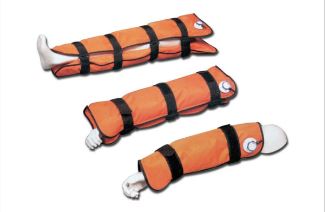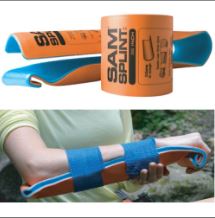Splinting and Spinal Immobilization
The following program will give you a deeper understanding on how Bones work, how different fractures can occur, how to deal with each separate kind of fracture and how to assess and treat spinal injuries. It will go over the spinal cord, displaying the importance of spinal immobilization as well as a multitude of other things.
Splinting
Broken bones are a relatively daunting injury but pretty straightforward to treat. We carry a multitude of types of splints that you can use to splint a wound. Those of which are described below:
- Vacuum Splint
Primarily used for larger extremities - Traction Splint
Used for Tibia and Femur fractures exclusively - Board Splint
Used primarily for legs - Sam Splint
Used for arms, small extremities or legs


Spinal Cord Immobilization
To immobilize the spinal cord you can turn to multiple different packaging methods. These being:
- Backboard
Used for spinal immobilization, requires the patient to be rolled onto the backboard. - Scoop Stretcher
Used for spinal immobilization, does not require the patient to be rolled onto the stretcher. - Megamover
User for spinal immobilization, requires the patient to be rolled onto stretcher. Typically used for oversized patients or in areas of tight access. - C-Collar
Used for every situation to immobilize the neck and head.
